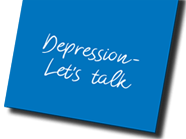What is ''adolescence''?
Adolescence is a phase of maturation: it is a transitional period of physical and psychological human development between childhood and adulthood, the cultural purpose of which involves preparation to assume adult roles. Classically, adolescence occurs from 12 to 22-25 years old.
Biologically, adolescence is marked by the onset of puberty and the termination of physical growth with changes in the sex organs and characteristics including height, weight, and muscle mass, as well as a time for major changes in brain growth and maturation.
Cognitively, adolescence is characterized by improvement in abstract thinking, in knowledge and in logical reasoning.
Socially, adolescence is a period of preparation for culturally adequate social adult roles such as being as worker or a romantic partner. It is such a dramatic ‘changing’ phase that statements to describe this period include an “identity crisis”, “normal to be abnormal”, “a normative psychosis”, etc.
Why do I behave differently to when I was a child?
Your body and brain are changing dramatically.
New behaviours are surfacing and your parents and other family members may be frustrated and irritated by them. Notably, you will have your attention shifting and it will be harder to concentrate, you will find it harder to get motivation from the tasks you are requested to comply with, and you will engage in higher risk-taking behaviour with possible negative outcomes.
All these are normal adaptive behaviours and result from on-going changes in the brain.
What is happening to my brain?
The brain is both hardware (constitution) and software (functions).
The teenager’s brain is different than the adult brain: it is still developing and will continue to do so until full maturation by the age of 22-24.
The greatest changes in the brain volumetric areas responsible for self-control, judgment, emotions, and organization develop between puberty and adulthood. Therefore, poor decision-making, recklessness, and emotional outbursts that characterize teenage behaviour are explainable.
During the teenage years there is a second phase of rapid brain development – the first phase occurred in the first 18 months of life – and then the connections among neurons in the brain that are not used disappear, while those that are used stay stronger, a process called “pruning” that makes the brain more efficient.
So, adolescent brain development can be consciously controlled by adolescent themselves: those who learn and train to organize their thoughts, understand abstract concepts, and control their impulses will be laying the neural foundations for the rest of their lives.
Therefore, conscious decision-making and the adoption of healthy lifestyle habits in adolescence will impact the rest of your life, as will ‘bad habits’. Here is an example: it is clear from research that adolescents are more vulnerable than adults to the effects of alcohol on learning and memory. Those who repeatedly use alcohol can suffer long-term effects, with compromise of cerebral functioning and long-term negative effects on the development of their brains.



